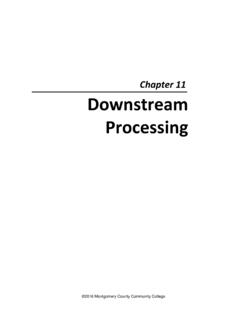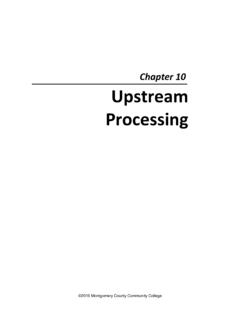Transcription of Elements of Chemical Reaction Engineering
1 Elements of Chemical Reaction Engineering Fifth Edition Prentice Hall International Series in the Physical and Chemical Engineering Sciences Visit for a complete list of available publications. The Prentice Hall International Series in the Physical and Chemical Engineering Sciences had its auspicious beginning in 1956 under the direction of Neal R. Amundsen. The series comprises the most widely adopted college textbooks and supplements for Chemical Engineering education. Books in this series are written by the foremost educators and researchers in the field of Chemical Engineering .
2 Make sure to connect with us! Elements of Chemical Reaction Engineering Fifth Edition H. SCOTT FOGLER. Ame and Catherine Vennema Professor of Chemical Engineering and the Arthur F. Thurnau Professor The University of Michigan, Ann Arbor Boston Columbus Indianapolis New York San Francisco Amsterdam Cape Town Dubai London Madrid Milan Munich Paris Montreal Toronto Delhi Mexico City S o Paulo Sidney Hong Kong Seoul Singapore Taipei Tokyo Many of the designations used by manufacturers and sellers to distinguish their products are claimed as trademarks.
3 Where those designations appear in this book, and the publisher was aware of a trademark claim, the designations have been printed with initial capital letters or in all capitals. The author and publisher have taken care in the preparation of this book, but make no expressed or implied warranty of any kind and assume no responsibility for errors or omissions. No liability is assumed for inci- dental or consequential damages in connection with or arising out of the use of the information or programs contained herein. For information about buying this title in bulk quantities, or for special sales opportunities (which may include electronic versions; custom cover designs; and content particular to your business, training goals, marketing focus, or branding interests), please contact our corporate sales department at or (800) 382-3419.
4 For government sales inquiries, please contact For questions about sales outside the United States, please contact Visit us on the Web: Library of Congress Cataloging-in-Publication Data Fogler, H. Scott, author. Elements of Chemical Reaction Engineering / H. Scott Fogler. Fifth edition. pages cm Includes index. ISBN 978-0-13-388751-8 (hardcover : alk. paper). 1. Chemical reactors. I. Title. 2016. 660'.2832 dc23. 2015032892. Copyright 2016 Pearson Education, Inc. All rights reserved. Printed in the United States of America. This publication is protected by copyright, and permission must be obtained from the publisher prior to any prohibited reproduction, storage in a retrieval system, or transmission in any form or by any means, electronic, mechanical, photocopying, recording, or likewise.
5 For information regarding permissions, request forms and the appropriate contacts within the Pear- son Education Global Rights & Permissions Department, please visit ISBN-13: 978-0-13-388751-8. ISBN-10: 0-13-388751-0. Text printed in the United States on recycled paper at RR Donnelley in Kendallville, Indiana. First printing, January 2016. Dedicated to Janet Meadors Fogler For her companionship, encouragement, sense of humor, love, and support throughout the years This page intentionally left blank Contents PREFACE xvii ABOUT THE AUTHOR xxxiii CHAPTER 1 MOLE BALANCES 1.
6 The Rate of Reaction , rA 4. The General Mole Balance Equation 8. Batch Reactors (BRs) 10. Continuous-Flow Reactors 12. Continuous-Stirred Tank Reactor (CSTR) 12. Tubular Reactor 14. Packed-Bed Reactor (PBR) 18. Industrial Reactors 22. CHAPTER 2 CONVERSION AND REACTOR SIZING 31. Definition of Conversion 32. Batch Reactor Design Equations 32. Design Equations for Flow Reactors 35. CSTR (Also Known as a Backmix Reactor or a Vat) 36. Tubular Flow Reactor (PFR) 36. Packed-Bed Reactor (PBR) 37. Sizing Continuous-Flow Reactors 38. Reactors in Series 47.
7 CSTRs in Series 48. PFRs in Series 52. Combinations of CSTRs and PFRs in Series 53. Comparing the CSTR and PFR Reactor Volumes and Reactor Sequencing 57. vii viii Contents Some Further Definitions 58. Space Time 58. Space Velocity 60. CHAPTER 3 RATE LAWS 69. Basic Definitions 70. Relative Rates of Reaction 71. The Reaction Order and the Rate Law 72. Power Law Models and Elementary Rate Laws 72. Nonelementary Rate Laws 76. Reversible reactions 80. Rates and the Reaction Rate Constant 83. The Rate Constant k 83. The Arrhenius Plot 90.
8 Present Status of Our Approach to Reactor Sizing and Design 93. CHAPTER 4 STOICHIOMETRY 105. Batch Systems 107. Batch Concentrations for the Generic Reaction , Equation (2-2) 109. Flow Systems 113. Equations for Concentrations in Flow Systems 114. Liquid-Phase Concentrations 114. Gas-Phase Concentrations 115. Reversible reactions and Equilibrium Conversion 126. CHAPTER 5 ISOTHERMAL REACTOR DESIGN: CONVERSION 139. Design Structure for Isothermal Reactors 140. Batch Reactors (BRs) 144. Batch Reaction Times 145. Continuous-Stirred Tank Reactors (CSTRs) 152.
9 A Single CSTR 152. CSTRs in Series 155. Tubular Reactors 162. Pressure Drop in Reactors 169. Pressure Drop and the Rate Law 169. Flow Through a Packed Bed 170. Pressure Drop in Pipes 174. Analytical Solution for Reaction with Pressure Drop 177. Robert the Worrier Wonders: What If 181. Synthesizing the Design of a Chemical Plant 190. Contents ix CHAPTER 6 ISOTHERMAL REACTOR DESIGN: MOLES AND MOLAR FLOW RATES 207. The Molar Flow Rate Balance Algorithm 208. Mole Balances on CSTRs, PFRs, PBRs, and Batch Reactors 208. Liquid Phase 208.
10 Gas Phase 210. Application of the PFR Molar Flow Rate Algorithm to a Microreactor 212. membrane Reactors 217. Unsteady-State Operation of Stirred Reactors 225. Semibatch Reactors 227. Motivation for Using a Semibatch Reactor 227. Semibatch Reactor Mole Balances 227. CHAPTER 7 COLLECTION AND ANALYSIS OF RATE DATA 243. The Algorithm for Data Analysis 244. Determining the Reaction Order for Each of Two Reactants Using the Method of Excess 246. Integral Method 247. Differential Method of Analysis 251. Graphical Differentiation Method 252.
















